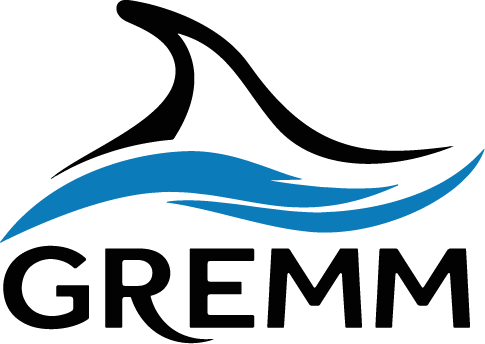Supported projects
The Orchestra donated 100% of ticket revenues to the three beneficiary organizations
The Marine Mammal Research and Education Group (GREMM), World Wildlife Fund Canada (WWF-Canada) and Sierra Club Canada.
Le gala de la terre will support the GREMM’s Saint-Laurent Beluga Project
A small population of belugas has lived in the Saint-Laurent for over 10,000 years. Isolated from neighboring populations in the Far North, the Saint-Laurent belugas are endangered.<\/p>\n
Weakened by prolonged exposure to toxic products dumped into their habitat for decades, their population has never recovered from the intensive hunting of the last century. The belugas now face disruptions caused by climate change.<\/p>\n
Our mission<\/strong>: To better understand the belugas and their habitat through scientific study of their behavior and monitoring of their health status. This knowledge is crucial for defining and implementing concrete actions for the recovery of the belugas and the conservation of the Saint-Laurent ecosystem.<\/p>\n ","tablet":"<\/p>\n \u00ab Funds from the Gala de la Terre will allow us to ensure the sustainability of many of these programs \u00bb<\/strong><\/p>\n Thanks to the combined use of light drones and hydrophones, it is now possible for researchers to observe, listen, follow and even take measurements of whales without approaching or disturbing them, and thus to gain a new perspective on the social habits of belugas. Fen\u00eatre sur les b\u00e9lugas enables the maintenance of these research projects while also allowing the general public to discover the visual and sound universe of belugas by participating in educational activities on terrestrial observation sites as well as in the CIMM immersive room.<\/p>\n Fen\u00eatre sur les b\u00e9lugas is a scientific adventure that aims to better understand belugas in order to better protect them! Our efforts to protect them must be guided by a thorough knowledge of their habits and needs. From 3 terrestrial sites and one mobile site, researchers from the beluga brigade use hydrophones and drones to collect valuable data on the presence, behaviour and impact that human activity has on belugas.<\/p>\n Fen\u00eatre sur les b\u00e9lugas offers an alternative to the observation at sea that occurs on both banks of the St. Lawrence as it is well-known that boats, engines and noises affect these mammals. The program aims to reduce boating in the most sensitive areas of belugas\u2019 critical habitat. Interactive activities will be offered to visitors from the 3 terrestrial observation sites and visitors can observe in real time or via delayed aerial images and recorded underwater sounds. Fen\u00eatre sur les b\u00e9lugas is wonderful opportunity to learn more about beluga behaviour.<\/p>\n "}},"slug":"dsm_advanced_tabs_child"}" data-et-multi-view-load-tablet-hidden="true"> A small population of belugas has lived in the Saint-Laurent for over 10,000 years. Isolated from neighboring populations in the Far North, the Saint-Laurent belugas are endangered. Weakened by prolonged exposure to toxic products dumped into their habitat for decades, their population has never recovered from the intensive hunting of the last century. The belugas now face disruptions caused by climate change. Our mission: To better understand the belugas and their habitat through scientific study of their behavior and monitoring of their health status. This knowledge is crucial for defining and implementing concrete actions for the recovery of the belugas and the conservation of the Saint-Laurent ecosystem.
The three main components of the Beluga Project are:<\/p>\n
Monitoring belugas at sea<\/strong> \u2014 Monitoring photo-identified belugas is the cornerstone of our research program. Each summer, since 1985, we spend hundreds of hours at sea with the belugas to create observation records of \"known\" individuals, a true family album.<\/p>\n The beluga observatory<\/strong> \u2014 The beluga observatory monitors the health of the female belugas in the Saint-Laurent estuary. Using images captured with lightweight drones, we perform morphometric measurements on the photo-identified females. These measurements, literally \"waist measurements\", are translated into fitness indices and allow us to detect pregnant females and the presence of calves with their mothers.<\/p>\n Window on the Belugas<\/strong> \u2014 From the cliffs and headlands overlooking the belugas' essential habitat, we study the rich and complex social life of the belugas using lightweight drones and hydrophones. The images and sounds captured by the beluga brigades are relayed to a network of terrestrial observation sites where naturalists invite visitors to see the belugas in a new way.<\/p>\n The Saint-Laurent Beluga Project is conducted with scientists from Canadian universities and NGOs in close collaboration with scientists from the Maurice-Lamontagne Institute of Fisheries and Oceans Canada and the Saguenay\u2014Saint-Laurent Marine Park (Parks Canada-S\u00e9paq).<\/p>\n ","tablet":"<\/p>\n The St. Lawrence River Beluga Observatory is a research project that aims to improve our knowledge of the health of belugas through new approaches. These include the use of drones to help determine indicators closely related to the conservation and recovery of this population in the process of disappearance. More specifically, the project aims to assess and monitor the physical condition and reproductive success of beluga females.<\/p>\n This program allows us to follow individual belugas by photographing them with drones. In addition to the beauty of the images they provide, drones offer a completely different perspective than the one we are used to from boats or land observation sites. This new point of view opens the door to a multitude of possibilities to explore.<\/p>\n The project we are starting aims to assess the health of belugas using the \"measurements\" taken from aerial drone photos : a technique called photogrammetry. Once processed by PhD students associated with GREMM, these photos provide data that ensures better monitoring of reproductive successes or failures.<\/p>\n "}},"slug":"dsm_advanced_tabs_child"}" data-et-multi-view-load-tablet-hidden="true"> The three main components of the Beluga Project are: Monitoring belugas at sea — Monitoring photo-identified belugas is the cornerstone of our research program. Each summer, since 1985, we spend hundreds of hours at sea with the belugas to create observation records of "known" individuals, a true family album. The beluga observatory — The beluga observatory monitors the health of the female belugas in the Saint-Laurent estuary. Using images captured with lightweight drones, we perform morphometric measurements on the photo-identified females. These measurements, literally "waist measurements", are translated into fitness indices and allow us to detect pregnant females and the presence of calves with their mothers. Window on the Belugas — From the cliffs and headlands overlooking the belugas' essential habitat, we study the rich and complex social life of the belugas using lightweight drones and hydrophones. The images and sounds captured by the beluga brigades are relayed to a network of terrestrial observation sites where naturalists invite visitors to see the belugas in a new way. The Saint-Laurent Beluga Project is conducted with scientists from Canadian universities and NGOs in close collaboration with scientists from the Maurice-Lamontagne Institute of Fisheries and Oceans Canada and the Saguenay—Saint-Laurent Marine Park (Parks Canada-Sépaq).
Gala de la terre will support WWF-Canada’s 10-year plan to Regenerate Canada
Every day, in Canada and around the world, we are witnessing the devastating impacts of biodiversity loss and climate change. <\/span>But there is still time to keep biodiversity loss and climate change from reaching catastrophic levels. The next decade is critical if we are going to reverse our path. Regenerate Canada is WWF-Canada bold 10-year plan to to expand habitats, reduce carbon in the atmosphere, lower industrial impacts and, as a result, reverse wildlife loss and fight climate change.<\/span><\/p>\n Drawing from scientific analysis and Indigenous guidance, all our conservation efforts will drive toward three ambitious goals, designed to get our future back on track:<\/p>\n \n ","tablet":"<\/p>\n Every day in Canada and around the world we bear witness to the devastating effects of biodiversity loss and climate change. Deadly heat waves, wildfires, floods and hurricanes have become the norm on a planet in crisis. However, there is still time to avoid catastrophic levels of biodiversity loss and climate change. The next decade is crucial if we are to reverse this trend. "}},"slug":"dsm_advanced_tabs_child"}" data-et-multi-view-load-tablet-hidden="true"> Every day, in Canada and around the world, we are witnessing the devastating impacts of biodiversity loss and climate change. But there is still time to keep biodiversity loss and climate change from reaching catastrophic levels. The next decade is critical if we are going to reverse our path. Regenerate Canada is WWF-Canada bold 10-year plan to to expand habitats, reduce carbon in the atmosphere, lower industrial impacts and, as a result, reverse wildlife loss and fight climate change. Drawing from scientific analysis and Indigenous guidance, all our conservation efforts will drive toward three ambitious goals, designed to get our future back on track:
\n
Regenerate Canada is our bold 10-year plan to increase habitat, reduce carbon in the atmosphere, mitigate industrial impacts and, in turn, halt biodiversity loss and combat climate change.
Based on scientific analysis and Indigenous recommendations, we will focus our conservation efforts on 3 ambitious goals to get our future back on track:<\/p>\n\n
How we’re improving habitats for biodiversity and climate in southern Quebec
On Montreal’s South Shore, we’re collaborating with municipalities to restore 42 hectares of municipal lands with native plants while advancing the implementation of nature-friendly management practices. We’ve already seen positive impacts on local biodiversity — our pilot year reported almost twice the diversity of insect species in habitats that we’ve restored, with 101 different species on average compared to 60 in “non-restored” habitats.
We also launched a maple forest biodiversity restoration and climate resilience collaboration with local foresters, conservationists and sugar bush owners — including training, carbon monitoring and partnership development — to improve sugar bush management.
LE GALA DE LA TERRE WILL HELP SIERRA CLUB TO EDUCATE AND DEFEND THE RIGHTS OF NATURE
Fight climate change | Preserve nature's rights | Strengthen our efforts in Quebec
With your support, the Gatineau River could gain personhood status!
The rights of nature to exist and thrive are integral to reversing the loss of biodiversity and creating a world where we live in harmony with the natural world that sustains us.
In 2022, Montreal hosted crucial global negotiations leading to the new Global Biodiversity Framework. Canada is now shaping laws to honor its commitment to protect and restore nature. We are advocating for including nature's rights into these strategies, engaging in public education and awareness campaigns, and collaborating with grassroots groups on the ground who are advancing the rights of nature, including the initiative to recognize the rights of the Gatineau River.
In response to global calls for urgent action to confront climate change and halt extinctions, the Sierra Club Canada Foundation embarked in 2020 on the Decade of Change.
We're committed to making every second of this decade count for the better. We invite you to join us in creating a future where:
- Our society is powered by 100% clean energy;
- The rights of Mother Earth are recognized and honoured;
- There is social and economic fairness upheld by strong democratic decision-making;
- We live within and respect the Earth’s limited resources; and
- Everyone has a sense of belonging in the outdoors and everyone has access to natural spaces.
Sierra Club Canada Foundation is a national grassroots organization with chapters across Canada, including in Atlantic Canada, the Prairies, Quebec, Ontario, and Sierra Youth. Our work in Quebec encompasses:
- Supporting municipalities in Quebec to safeguard nature;
- Raising awareness and fostering engagement for the rights of the Gatineau River; and
- Cultivating a movement in Quebec to champion the goals of the Decade of Change.
Our Quebec Chapter is particularly focused on conserving biodiversity in cities and towns throughout Quebec by enhancing awareness and educating municipal leaders on methods to protect bird habitat. Our recently published report serves as a guide for communities, emphasizing the responsibility to safeguard bird habitats and offering practical ideas for doing so. We aim to ensure that more cities and towns in Quebec recognize the importance of providing safe places for birds to nest and nurture their young.
Quebec boasts one of Canada's first rivers in recent times to attain personhood status recognized by surrounding communities—the Magpie River, or Mutehekau Shipu. Former Kitigan Zibi Anishinābeg Chief Gilbert Whiteduck is now advocating for the rights of the Tegànàdin Zibi or Gatineau River. His leadership has inspired the formation of the Tegànàdino Alliance, a coalition of individuals and groups dedicated to advancing personhood rights for the river.
As part of our special focus on nature's rights this year, we are actively supporting efforts to promote this concept in Quebec. We are proud members of the Tegànàdino Alliance, which is leading the charge to protect the rights of the Tegànàdin Zibi / Gatineau River.
Join us and the Tegànàdino Alliance in raising awareness of nature's rights and engaging citizens and communities along the river to uphold its right to remain clean and flow freely, ensuring clean and healthy water for generations to come.




